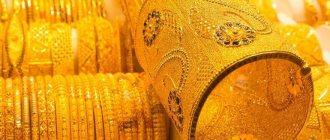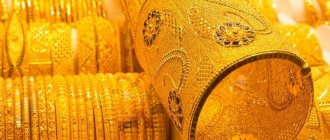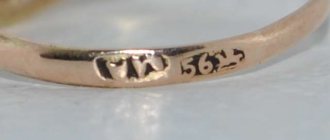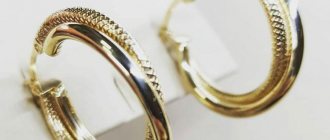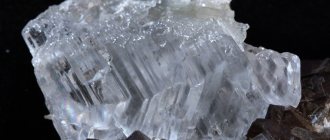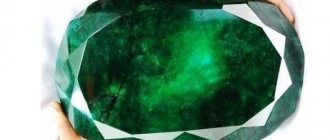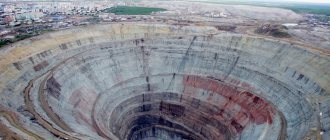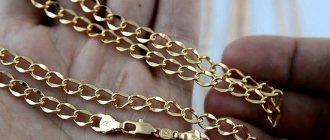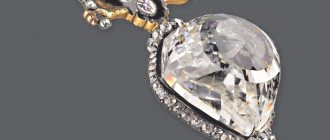Greetings to all pearl lovers! Today we’ll talk about record holders who have become famous throughout the world and expensive samples of unusual large pearls mined in the South Sea. What do you think could be the largest pearl in the world? The size of a quail egg or maybe the size of a chicken egg? The samples found from the efforts of sea oysters are much larger than the samples from your wildest guesses! Read more below. Let's start with the fact that pearls for humans mean much more than precious stones formed in the bowels of the earth. Living organisms were involved in the creation of the mother-of-pearl miracle, some of which appeared on earth long before man began to rule there. This fact alone evokes awe and respect for the waste product of the mollusk, which people have learned to grow on their own!
There are several examples of pearls of phenomenal size in the world today. Everyone deserves to see him not only in photos, but also live. And, if the latest find, which broke all records in terms of size, has an ordinary life story, then its predecessor, the famous record-breaking pearl, is literally shrouded in legends, myths and stories.
“Pearl of Allah”: what is known about it
Until last year, a huge formation with the symbolic name “Pearl of Allah” was considered unparalleled in the world. Nakhodka saw the world in 1934. It was at this time that she was completely accidentally raised from the bottom of the South China Sea near the island of Palawan. By the way, it is on this island that today the largest farm for growing unique golden pearls in large “gold-lipped” mollusks is located.
The frozen mass found was impressive in size and shape. The weight of a pearl mussel that was able to “carry” such a load was 300 kg, while the mass of the mollusk itself is one tenth of the total weight, the rest is the shell.
Research on the pearl gave birth to an interesting story. It turned out that local residents were searching for a young man - the 18-year-old leader of the Etema tribe. The guy was never found, they decided that he drowned or was eaten by sharks.
After the discovery of the unusual find, they began to put forward a version that the hand of the young leader became the nucleus for the formation of the nacreous growth. It turned out that the guy was diving for pearls and may have become hostage to a giant tridacna shell.
According to legend, the guy sank to the bottom for another prey, saw the slightly open doors of a giant shell, extended his hand inside, but the doors slammed shut along with his hand. The young man was unable to free himself from the captivity of a two-meter sink and choked under the water. The leader's body was raised to the surface along with the mollusk, and only when they tried to free his hand they discovered a pearl of gigantic size.
The weight of the unusual find was 6.35 kg, dimensions 24x14 cm. The irregular shape of the formation suggested interesting thoughts, because the shell was literally lined with convolutions, similar to the human brain. Visually, the pearl had a phenomenal resemblance to the head of a man in a turban. Hence the name of the find “Pearl of Allah”.
The formation in the shell of the mollusk, despite its enormous size, did not shine at all, so its price turned out to be lower than that of smaller samples with a pearlescent sheen. Nevertheless, mention of it was included in the Guinness Book of Records as the largest example of pearls.
Types of pearls
There are two main types of pearls - sea and freshwater. Since sea water is richer in its chemical composition than river water, the pearlescent secretion formed around the pearl “base” looks much brighter and richer. Pearls have not been mined naturally for almost half a century - this is prohibited by international law. To grow shells, special farms located in tropical seas are used.
It is possible to distinguish between sea and river “material” with an unprofessional eye. It is enough to carefully examine the shape, color and level of brilliance of the pearl.
- It is almost impossible to grow a perfectly round pearl. However, sea pearls are as close to ideal as possible, but river pearls, on the contrary, have more elongated roundness, reminiscent of an egg or an oval. The relief of the outer shell also differs. In freshwater pearls, as a rule, it is uneven, covered with tubercles and dents, while in sea pearls it is even and smooth.
- What distinguishes freshwater pearls from sea pearls is their shine. The first one looks dull in the light and has a matte tint, while the second one shines and shimmers in the sun, “showing off” its mother-of-pearl. This effect is achieved due to the special composition of sea water, containing a high percentage of salt. During maturation, the pearl is polished in an alkaline environment, resulting in a characteristic pearlescent luster.
- Freshwater pearls are smaller in size than sea pearls, averaging 6-8 mm in diameter. The ripening period also passes faster - about 2 years, and accordingly the price per gram is set lower.
- You can distinguish sea and freshwater pearls by their color. The first one does not shine with transitional shades, but you can find black and hot pink “models”. The second has a much richer range of colors - light cream and brown to olive and lilac-lilac. The coloring of freshwater pearls often has a fragmented appearance, while sea pearls are evenly colored and have no color flaws.
- The longevity of the “inhabitants” of seas and rivers also varies. Everything here is like with people. Freshwater pearls that are more hardened in cold water have increased wear resistance and do not lose their appearance for many years. But marine aristocrats, raised in the warm tropics, are very vulnerable to external conditions and can quickly lose their luster under intensive use. If the beads inherited shine, as they did many years ago, having begun their “story” on my grandmother’s neck, then this is guaranteed to be river material.
Lao Tzu – Legend No. 2
The Chinese gave another name to the unusual find. They called it the pearl of Lao Tzu, believing that the ancient Chinese philosopher and founder of Taoism insisted on inserting an amulet depicting himself and the faces of two philosophers depicted on the amulet - Confucius and Buddha - into the shell of a giant organism. He entrusted the responsible task to the best student.
Lao Tzu was confident that three sages with completely different views on life could live in one organism.
By this he wanted to prove that the same task is within the power of all humanity with excellent philosophical views. The sage instructed to protect the amulets in the oyster shell for four years. In his opinion, this period was enough for the long-awaited harmony to come to Earth. Instead, the philosopher's followers moved the pearl as it grew into the shells of larger mollusks.
The resulting giant pearl did not bring the long-awaited peace. On the contrary, it gave rise to envy, greed and war. In the mid-18th century, she was expelled from the country by boat. During a storm, the pearl sank near the island of Palawan.
An American scientist told an interesting legend in his work. He mentioned that in 1939, when the giant formation was exhibited in the museum, the Chinese Li appeared there and told the true story of the discovery.
According to modern scholars, the legend in the Chinese interpretation is nothing more than fiction. They are sure that the pearl is no more than 600 years old, while the mentioned philosopher lived more than 2,400 years ago.
The estimated value of the find is $40 million. For now it is stored in the underground vault of the owner Victor Barbish in an American bank, the name of which has not been disclosed. The owner of the unique pearl said that he receives many requests to sell the treasure.
One of the offers was from Bin Laden's people. They were ready to buy the miracle pearls for 60 million dollars as a gift to Saddam Hussein. Victor refused and assured that he had no plans to sell the pearl, but would eventually transfer it to a museum for public display.
Pellegrina (Pelegrina)
This pearl is considered one of the most mysterious in history; its location is unknown today. The unique jewel has always been called the “sister” of another famous pearl – “Peregrine”. Due to the similarity of names and shape (both are almost perfect pear-shaped), they are still often confused. Pellegrina was a real “pearl” of the Yusupov family collection. It is known that at one time it belonged to the Spanish king Philip IV, who in the 17th century gave it to his daughter Maria Teresa. There is a legend that Grigory Rasputin once asked Prince Felix about his two incomparable pearls - his wife Irina and Pellegrina, and that, allegedly, it was under this pretext that he was invited to the Yusupov palace.
Most likely, after the revolution, the Yusupovs managed to take this jewel abroad, and in 1953 the pearl was sold by Prince Felix to the Genevan jeweler Jean Lombard.
Philippine pearl record holder
The pearl, found in 2016 near the island of Palawan, broke the record previously set by Lao Tzu. The amazing find was found not at the bottom of the ocean, but under the bed of a local fisherman. A resident of the island admitted that he lifted a giant pearl from the depths ten years ago and all this time hid this fact from friends and acquaintances.
The fisherman claimed that he did not think about the price of the find, but kept it as a talisman for good luck. Every time before going fishing, he touched the pearl surface and asked for a successful catch.
The shape of the formation is irregular, length - 30 cm, width - 67 cm. The miracle of nature weighs 34 kg.
The history of the discovery is striking in its simplicity. The fisherman said that in the sea he came across an obstacle, on which he caught his anchor. Trying to free himself, the man sank to the bottom, where he discovered a huge mollusk with a pearl inside.
For many years, the Filipino remained silent about the find, believing that it brought him good luck. Only in connection with moving to another state, he was forced to hand over the talismanic treasure to a relative, who persuaded him to show the pearl to the authorities and put it on display for tourists. The estimated price of the find is $100 million and so far it is the largest natural pearl (authenticity verified) in the world.
“Pearl of Allah”: a great precious misunderstanding.
Pearls are one of the most mysterious, expensive and unique stones. Moreover, it is mined not in the depths of the earth, but at the bottom of the sea. And, as you know, the depths of water keep many secrets.
One of these many mysteries was once solved by Philippine pearl divers. This happened in the early morning of 1934, when the young men, who were about to go to their next sea fishing, were missing one of their comrades. As it turned out later, no one had seen the guy the day before, and therefore it immediately became clear to everyone: something irreparable had happened...
A young man named Etem was not the first, and, alas, not the last victim of the giant mollusk that lives off the coast of the Philippines, the Giant Tridacna. Soon the comrades found on the seabed the lifeless body of a young diver, whose hand was tightly clamped by the flaps of a huge shell.
The ill-fated mollusk was pulled ashore, and what was the surprise of the local residents when a huge pearl weighing 6.5 kg was removed from the belly of the shell!
And the mullah, who came to look at the miracle pearls, for some reason immediately fell to his knees and began to quickly read prayers. As it turned out later, the pious old man saw the face of Allah himself in the irregular outline of the pearl - from then on this giant sea stone was called the “Pearl of Allah”...
After the great pearl of Allah saw the light, its amazing journey began. At first, the precious find was carefully kept in a Philippine village, whose inhabitants caught this sea treasure. But one day a visiting foreigner accidentally saved the son of the elder of this village from certain death. As a reward for the saved young man, the happy father gave the stranger his greatest treasure - the pearl of Allah. The lucky guy's name was Wilburn Cobb and he, without being modest - what's wrong with that? – accepted such a high award.
Now, for almost half a century, the precious pearl ended up in the Cobb family and would have stayed there for as long if the unlucky heirs of the savior, the son of a Filipino leader, had not decided to earn extra money from their ancestor’s unique gift. Not only that, these “narrow-minded” people also managed to cut a lot of money in what seemed to be the most profitable deal for them! The Pearl of Allah moved to an American jeweler named Peter Hoffman for only... 60 thousand dollars! Just a ridiculous amount for such a unique stone!
However, no one else was going to underestimate such a gigantic and rare treasure. Quite adequately assessing what a unique stone he now owned, the jeweler reasoned sensibly: “I will sell the pearl, earning a considerable amount for it, but I will retain the right of ownership!” This is what Peter Hoffman did, reselling the Pearl of Allah to the wealthy collector Vitor Barbish.
It is he who still has this great natural find.
But the story of Allah's pearl does not end there. In the 90s of the 20th century, the notorious Arab billionaire Osama bin Laden found out about the great treasure and decided to buy the pearl from its owner for an incredible amount of... 60 million dollars! And - in cash! Yes, even the largest and most famous diamonds could not dream of such astronomical figures!
And here - some kind of pearls, also of irregular shape and without the coating of mother-of-pearl! By the way, it was for this reason that experts immediately “rejected” the unique sea stone, declaring that it was of absolutely no value! Although, I think, bin Laden managed to wipe the nose of these know-it-all skeptics with his stunning proposal... However, we digress.
So, an astronomical sum is offered, but Vitor Barbish... flatly refuses the Arab billionaire and part-time terrorist No. 1. And he immediately hides the pearl of Allah in one of the most reliable bank safes so that no one would be tempted to steal the treasure. According to rumors, to this day the largest pearl in the world rests in the silence and complete darkness of some bank vault. But is this really the case? I’m afraid that we mere mortals are never destined to know the truth...
"Beauty of the Ocean" performed by Mongolians
The man-made sphere is not inferior and even surpasses natural miracle pearls in price and size. A sample of the largest pearl was developed in Mongolia and called “Beauty of the Ocean.” The pearl was created over three years and has the property of glowing in the dark. So far, this is not only the largest, but also the most expensive specimen on the pearl market.
Pellegrina (Pelegrina)
This pearl is considered one of the most mysterious in history; its location is unknown today. The unique jewel has always been called the “sister” of another famous pearl – “Peregrine”. Due to the similarity of names and shape (both are almost perfect pear-shaped), they are still often confused. Pellegrina was a real “pearl” of the Yusupov family collection. It is known that at one time it belonged to the Spanish king Philip IV, who in the 17th century gave it to his daughter Maria Teresa. There is a legend that Grigory Rasputin once asked Prince Felix about his two incomparable pearls - his wife Irina and Pellegrina, and that, allegedly, it was under this pretext that he was invited to the Yusupov palace.
Most likely, after the revolution, the Yusupovs managed to take this jewel abroad, and in 1953 the pearl was sold by Prince Felix to the Genevan jeweler Jean Lombard.
What other samples exist?
In addition to the “giants” described above, interesting examples of non-standard shapes and sizes have surfaced in the history of pearls:
- Peregrina is a pear-shaped property of Elizabeth Taylor.
- Regent - belonged to Bonoparte.
- The Pearl of Asia is the property of the Indian Shah, who built the Taj Mahal.
- Palawan - discovered in the Philippines.
- Southern Cross - made of 11 fused beads in the shape of a cross.
- Abernathy is the largest freshwater pearl in the world.
Today, the largest pearls are grown in the South Seas. These are rare golden pearls and white pearls with an average diameter of up to 20 mm.
Now you know about the unusual discoveries of man and the achievements of mollusks. Should we believe them or not? Share the article with your friends and discuss it on social networks!
Team LyubiKamni
Interesting facts about pearls
They say that Queen Cleopatra once argued with Mark Antony, promising to make the most expensive cocktail from ordinary wine. She dissolved a large pear-shaped pearl in a glass and drank it in one gulp in front of the amazed admirer. The dispute was won.
Here are some more interesting facts related to pearls:
- In total, there are 8 pearl configurations: oval, pear, button, semicircle, drop, circle, sphere and arbitrary irregular shape.
- Marie de Medici, Queen of France, was very fond of wearing pearls and had one special dress in her wardrobe. It was all embroidered with jewelry, of which there were about 30 thousand pieces.
- On the territory of ancient Rus' there were more than 50 rivers where pearl fishing was carried out. It was mainly concentrated in the northwestern part of the country.
- It is a rare occurrence when there are two pearls in a shell at once. An example of natural “magic” was the discovery of nine pearls at once, fused with each other in a cross shape and called the “Great Southern Cross”.
- Coco Chanel elevated pearls to the rank of classic jewelry. With her light hand, he came into fashion, becoming certainly associated with the little black dress. As the great fashion designer said, pearls are always right.
The most famous pearls in the world and interesting stories associated with them
There are many jewels in the world that have names like people. Usually their trail stretches through history across centuries and countries. People collect jewelry, and stones are “collected” by their owners. Some boast a very decent selection of historical celebrities. This collection contains a story about the largest and most famous pearls in the world.
Pellegrina (Pelegrina)
This pearl is considered one of the most mysterious in history; its location is unknown today. The unique jewel has always been called the “sister” of another famous pearl – “Peregrine”. Due to the similarity of names and shape (both are almost perfect pear-shaped), they are still often confused. Pellegrina was a real “pearl” of the Yusupov family collection. It is known that at one time it belonged to the Spanish king Philip IV, who in the 17th century gave it to his daughter Maria Teresa. There is a legend that Grigory Rasputin once asked Prince Felix about his two incomparable pearls - his wife Irina and Pellegrina, and that, allegedly, it was under this pretext that he was invited to the Yusupov palace. Princess Zinaida Yusupova and the Pellegrin family pearl in the portrait of François Flameng and in photographs Most likely, after the revolution, the Yusupovs managed to take this jewel abroad, and in 1953 the pearl was sold by Prince Felix to the Genevan jeweler Jean Lombard. Felix and Irina Yusupov in Paris, photo from the 1960s
Peregrina ("The Wandering Pearl" or "The Wanderer")
“The Wanderer,” the older sister of Yusupov’s “Pelegrina,” can, without a doubt, be considered the most famous historical pearl. It was found in the 16th century off the coast of Panama. According to legend, a slave who was so lucky was rewarded with freedom. The first owner of the rarity was King Philip II of Spain. Then the pearl changed its kings and queens several times: Mary Tudor, Margaret of Austria, Napoleon's brother Joseph Bonaparte and Napoleon III, the Hamilton spouses... There is a known story that the latter lost the jewel twice - at a ball in Buckingham Palace and on the sofa of Windsor Castle. This is explained by the fact that the pearl was too heavy and simply fell out of all the settings. Portrait of Mary Tudor with the pearl “Peregrina” Then both times and queens changed - in the 20th century, Elizabeth Taylor owned the pearl. By the way, she also lost a piece of jewelry once in a room at the Caesars Palace Hotel. A historical pearl was found in the mouth of her beloved puppy. After this, the film star decided not to take risks. Together with the jewelry house Cartier, Elizabeth herself came up with the design of a unique pearl and diamond necklace, the main decoration of which is La Peregrina. After the actress's death in 2011, this beauty was auctioned for $11.8 million. Elizabeth Taylor and the famous Peregrina pearl necklace
Pearl of Gogibus
A unique pearl, not quite regular pear-shaped, but very large - its weight is about 130 carats. It received its name in honor of the brave merchant Francois Goguibus, who acquired it on the islands of the West Indies and brought it to Spain in 1620. According to legend, the merchant invested his entire fortune in the jewel and offered to buy it to the Spanish King Philip IV. When the monarch asked the traveler how he was not afraid to spend all his savings on one single stone, he replied: “Because I knew that there was a king of Spain to buy it from me.” Philip had no choice but to pay for the curiosity and insert it into his crown. Pearl of Gogibus This jewel was considered the largest pearl in Europe until it disappeared in the 18th century. However, in 2010, it unexpectedly appeared at an online auction and was sold for $3 million.
Pearl of Allah (Pearl of Lao Tzu)
This unique creation of nature was found relatively recently - in 1934, but it has managed to acquire legends no worse than most historical treasures. If you collect everything that has been invented about it, it turns out that this is exactly the pearl that the famous founder of Taoism, Lao Tzu, tried to grow a couple of thousand years ago. He allegedly placed a jade amulet with the image of three faces inside the pearl shell: Confucius, Buddha and his own, in order to obtain a unique pearl, and bequeathed to his students to monitor this process. They carried the pearl as it grew into larger and larger shells, but then the jewel was lost at sea during a storm. True, scientists who have studied the rarity do not confirm this version, since, according to them, this pearl is no more than 600 years old. The Pearl of Allah got its name because of its resemblance to the head of a man in a turban. The next round of legends is associated with our time. A huge pearl was found near the Philippines, and allegedly cost the life of a young diver. The giant tridacna clam slammed shut, pinching his hand. When local residents discovered the body and pulled out a huge shell from the sea, they found a pearl weighing almost 6.5 kilograms inside. A mullah from a local mosque saw in its intricate, irregular shape the head of a man in a turban and called it “the Pearl of Allah.” Despite the fact that the pearl does not have the usual mother-of-pearl luster, its value today is estimated at $40 million. The exact location of this treasure is unknown, there is only information that it is located in New York.
New record holder
The largest pearl in the world But a 6-kilogram “tear of the sea” is not the limit. A few years ago, The Daily Mail reported that a pearl weighing 34 kg was found there in the Philippines! The dimensions of the new record holder are 67 cm in length and 30 cm in width. This miracle of nature was allegedly caught by a fisherman about 10 years ago. This man, probably not at all inclined to money-grubbing, simply kept her at home as a talisman. Other people saw her only during a fire in the lucky man's house. The jewelry was left in the city, where it is available for inspection while the examination is carried out. Its cost could be $100 million. The weight of the new record holder among pearls is 34 kilograms
The Pearl of Puerto.
The Pearl of Puerto is the largest natural pearl in the world. It was found in a giant clam by a local fisherman in the Philippines.
For many years, pearls were kept in the house of a fisherman, who considered them his talisman. The world learned of its existence through a relative of a fisherman who received the pearl when the fisherman died.
The Pearl of Puerto is 2.2 feet long and 1 foot wide. She weighs an incredible 34 kg. The Pearl of Puerto is currently on display at the City Hall of Puerto Princesa.
Satlada
In the world, Satlada is usually called the seven-string pearl necklace. One of the most famous Satlad necklaces belonged to the Nizam rulers of the Indian state of Hyderabad. The necklace, made in Basra, features 465 pearls embedded in the necklace.


